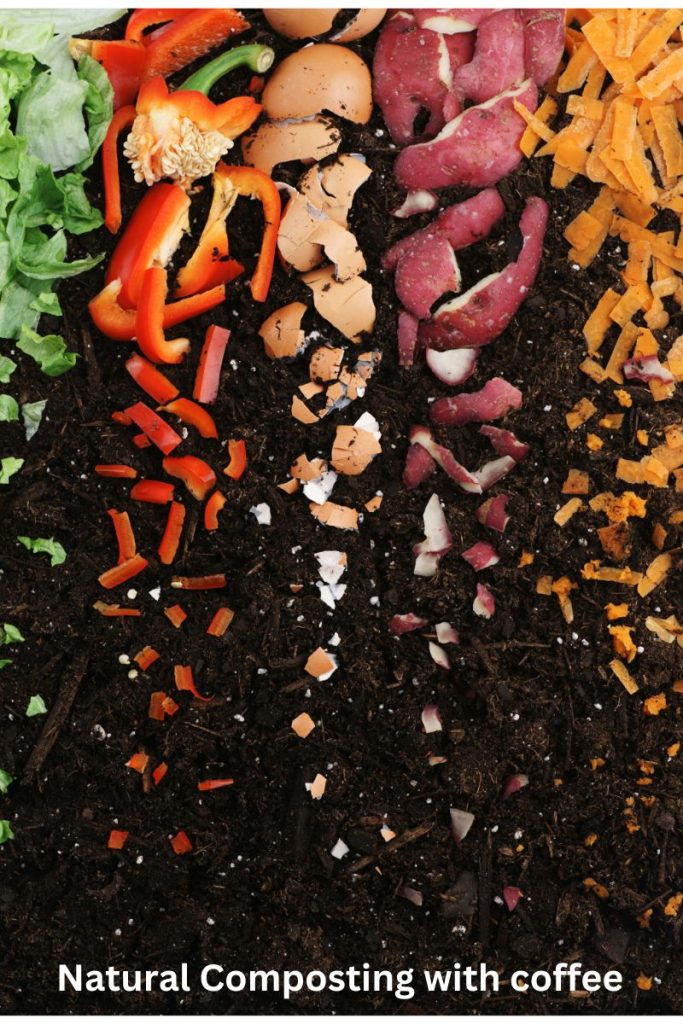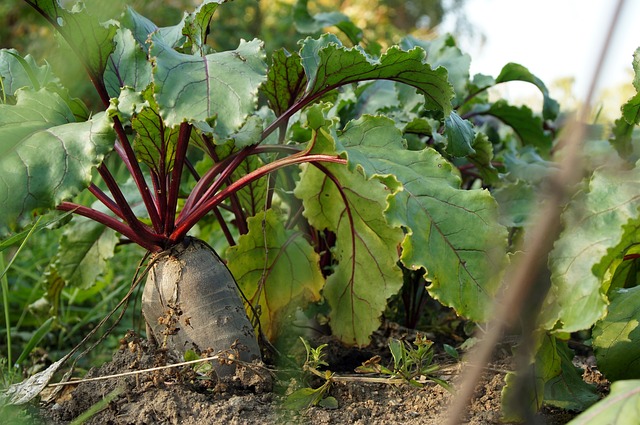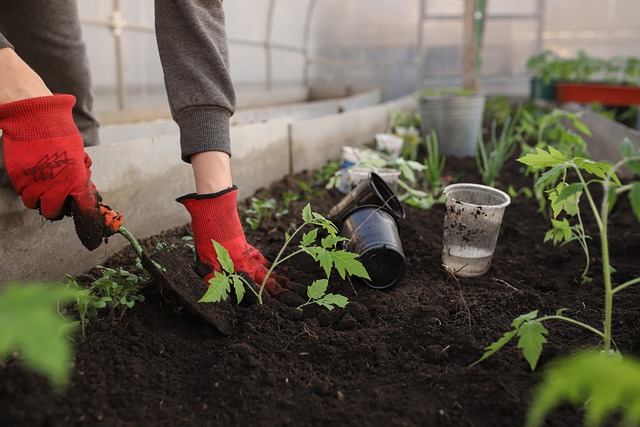Revitalize your vegetable garden with a effective ingredient you might already have in your kitchen. Integrating coffee grounds into your vegetable garden can work wonders, enriching the soil with essential nutrients and fostering a thriving environment for your plants. Lets discover uses Coffee grounds for vegetable garden.
How to Effectively Use Coffee Grounds in Your Garden
Coffee grounds are a valuable resource for gardeners seeking to enrich their soil and boost plant health.
Using Coffee Grounds as Fertilizer
Coffee grounds are rich in nitrogen, making them an excellent fertilizer for your garden. They also contain other essential nutrients like potassium and phosphorus, which are vital for plant growth. To use coffee grounds as a fertilizer:
Dry the Grounds: Spread used coffee grounds on a sheet of newspaper or a baking sheet to dry. This prevents mold growth.
Mix with Soil or Other Organic Material: Combine the dried coffee grounds with soil or compost to avoid compacting that could affect water drainage and root growth.
Apply to Your Plants: Use the mixture as a top dressing around your plants. This method is especially beneficial for nitrogen-loving plants like tomatoes and blueberries.
Adding Coffee Grounds to Compost

Coffee grounds are an excellent addition to compost piles. They are considered “green” compost material, which means they’re rich in nitrogen, helping to balance the carbon-rich “brown” materials.
Balance with Brown Compost Material: For optimal composting, maintain a balance between green and brown materials. Aim for a ratio of 1 part green to 4 parts brown.
Stir into Your Compost: Mix coffee grounds into your compost pile. This will help introduce beneficial microorganisms and speed up the composting process.
Monitor Moisture Levels: Coffee grounds can compact and retain moisture, leading to an anaerobic composting process if not properly managed. Ensure your compost pile remains well-aerated and not too wet.
Directly Applying Coffee Grounds to Garden Soil
While adding coffee grounds directly to the soil can improve soil structure and fertility, it’s important to use this method judiciously.
- Avoid Direct Application in Large Quantities: Applying large amounts of coffee grounds directly on the soil can lead to compaction and negatively affect water infiltration.
- Incorporate Lightly into the Soil: Spread a thin layer (no more than half an inch) of coffee grounds over the soil and gently mix it into the top 2-3 inches of soil. This can help improve soil aeration and nutrient content without negatively impacting water drainage.
- Use as a Mulch: Coffee grounds can also be used as a mulch around plants. as with direct soil application, use them sparingly to prevent compaction and ensure that water can penetrate the soil effectively.
Benefits of Using Coffee Grounds for Vegetable Plants

Coffee grounds offer a range of benefits for vegetable plants, from improving soil structure to adding essential nutrients. Here’s how using coffee grounds can be advantageous for your garden:
Enhancing Nitrogen Levels with Coffee Grounds
Nitrogen is a crucial nutrient for plant growth, especially for the development of green leaves. Coffee grounds are a rich source of nitrogen, providing a slow-release form that plants can use over time. Adding coffee grounds to your garden helps:
Boost Leafy Growth:
The nitrogen in coffee grounds promotes vigorous and healthy leaf growth in vegetable plants.
Improve Soil Fertility:
By adding coffee grounds to your soil or compost, you’re enhancing the overall fertility of the garden bed, which benefits not just one season’s crop but future plantings as well.
Support Microbial Activity:
The addition of organic material like coffee grounds supports the growth of beneficial microorganisms in the soil. These microbes play a key role in breaking down organic matter into nutrients that plants can absorb.
Creating Acidic Soil Conditions for Acid-Loving Plants
While fresh coffee grounds can be acidic, most used coffee grounds are neutral to slightly acidic, making them suitable for a wide range of plants. However, they can still slightly lower the pH of the soil over time, which is beneficial for acid-loving plants. Using coffee grounds can:
- Adjust Soil pH: Gradually adding coffee grounds to the soil can help create more acidic conditions favored by plants like tomatoes, blueberries, and strawberries.
- Enhance Mineral Absorption: Acidic soil conditions can increase the availability of certain nutrients, such as iron, which is crucial for the development of strong and healthy plants.
- Improve Disease Resistance: For some plants, growing in slightly acidic soil helps enhance their natural resistance to pests and diseases.
Practical Tips for Incorporating Coffee Grounds in Gardening
Incorporating coffee grounds into your gardening routine can significantly enhance soil quality and plant health. Below are practical tips for using both fresh and used coffee grounds, including their application as mulch.
Using Fresh Coffee Grounds for Maximum Benefit
While used coffee grounds are more commonly applied to gardens due to their neutral pH, fresh (unused) coffee grounds can also be beneficial, particularly for acid-loving plants. Here’s how to use them:
| Method | Benefits | How to Apply |
|---|---|---|
| Direct Soil Amendment | Increases acidity for acid-loving plants | Sprinkle fresh grounds sparingly around plants that thrive in acidic conditions, such as azaleas, blueberries, and rhododendrons. Incorporate lightly into the soil. |
| Pest Deterrent | Natural repellent for certain pests | Use fresh grounds around plants to deter slugs and snails. The caffeine acts as a natural deterrent. |
Using Coffee Grounds as Mulch for Plant Health
Coffee grounds can also be used as mulch, providing benefits like moisture retention and temperature regulation. However, it’s important to use them correctly to avoid issues like soil compaction.
| Method | Benefits | How to Apply |
|---|---|---|
| Mulching with Coffee Grounds | Retains soil moisture, suppresses weeds, adds organic matter | Apply a thin layer (up to 1/2 inch) of coffee grounds over the soil around your plants. Avoid piling it against plant stems to prevent mold and rot. For best results, mix the coffee grounds with other organic mulch materials like straw or leaf mold to improve aeration and prevent compaction. |
Additional Tips for Incorporating Coffee Grounds in Gardening
- Worm Bins: Coffee grounds are excellent for vermiculture (worm composting). They are a favorite food of earthworms and can help increase the nutrient content of worm castings.
- Testing Soil pH: If you’re concerned about the acidity levels in your soil, consider testing it before adding large amounts of fresh coffee grounds. This will help you determine if your garden will benefit from the added acidity.
Common Mistakes to Avoid When Using Coffee Grounds in Your Garden
Incorporating coffee grounds into your garden can be highly beneficial, but it’s essential to avoid common mistakes that could potentially harm your plants or soil. Here are some key errors to avoid and how to prevent them:
Avoiding Overuse of Coffee Grounds to Prevent Soil Imbalance
Mistake: Applying too many coffee grounds directly to the soil can lead to nitrogen depletion in the short term, as microorganisms use the nitrogen to break down the grounds, and potentially create a barrier that affects water infiltration and air movement.
Prevention:
- Use coffee grounds sparingly in the garden. A layer of no more than 1/2 inch should be mixed into the top few inches of soil.
- Consider mixing coffee grounds with other organic material before applying them to the garden to ensure a balanced nutrient mix.
Ensuring Proper Breakdown of Coffee Grounds in Compost Piles
Mistake: Adding large amounts of coffee grounds to a compost pile without balancing them with brown (carbon-rich) materials can lead to a compacted, slimy mess instead of healthy compost.
Prevention:
- Maintain a balanced compost pile with roughly 1 part green (nitrogen-rich) material, like coffee grounds, to 4 parts brown (carbon-rich) material, such as leaves, straw, or shredded paper.
- Regularly turn your compost pile to ensure even decomposition and aeration.
Explore Creative Ways to Utilize Coffee Grounds Beyond Fertilizing
Exploring creative uses for coffee grounds beyond traditional fertilizing can enhance your gardening and home practices. Here are innovative ways to utilize spent coffee grounds in your DIY compost bin and as a natural pest deterrent in your garden.
Using Spent Coffee Grounds for Your DIY Compost Bin
- Worm Bin Food: If you have a vermiculture bin, adding coffee grounds can be beneficial. Worms are attracted to coffee grounds and thrive on them, resulting in richer worm castings for your garden.
- Odor Control: Coffee grounds can help control odors in your compost bin. Their natural fragrance neutralizes unpleasant smells, making your composting experience more pleasant.
- Disease Suppression: Research suggests that coffee grounds have antimicrobial properties that could help suppress some pathogens in the compost pile, leading to healthier compost for your garden.
Utilizing Coffee Grounds to Ward off Pests Naturally in Your Garden
- Slug and Snail Barrier: Sprinkling dried coffee grounds around plants can deter slugs and snails, as they dislike crawling over the gritty texture. The caffeine also acts as a natural repellent.
- Ant Repellent: Coffee grounds spread around the garden can deter ants from setting up camp near your plants. Ants do not like the smell of coffee and will avoid areas treated with it.
- Cat Repellent: If you want to keep cats from using your garden as a litter box, sprinkle coffee grounds mixed with orange peels around your plants. Cats dislike the smell and will steer clear.
- Natural Flea Repellent for Pets: Rubbing coffee grounds into your pet’s fur after bathing can help repel fleas. Ensure the grounds are cool and rinse thoroughly afterward.
Additional Creative Uses
- Mushroom Cultivation: Coffee grounds are an excellent medium for growing certain types of mushrooms, such as oyster mushrooms, providing a nutrient-rich substrate.
- Fabric Dye: Coffee grounds can be used to dye fabric or paper, giving them a beautiful, natural brown tint.
- Natural Deodorizer: Place dried coffee grounds in a breathable bag or container in your refrigerator, freezer, or closet to neutralize odors naturally.
Q: Can I use coffee grounds in the garden?
A: Yes, coffee grounds can be a great addition to your garden as they provide nutrients to the soil and help with water retention.
Q: How can I use coffee grounds for plants?
A: You can sprinkle coffee grounds around the base of plants or mix them into the soil to provide a boost of nitrogen and other nutrients.
Q: Do plants like coffee grounds?
A: Yes, many plants benefit from the use of coffee grounds, especially acid-loving plants like azaleas, rhododendrons, and blueberries.
Q: Are there specific ways to use coffee grounds in gardening?
A: Yes, you can use coffee grounds to help with composting, improve soil drainage, repel pests, or even create a natural fertilizer for your plants.
Q: Can I use ground coffee in my garden as well?
A: Yes, ground coffee can also be beneficial in the garden, providing similar benefits to coffee grounds such as improving soil structure and adding nutrients.
Q: Are coffee grounds considered a natural option for gardening?
A: Yes, coffee grounds are a natural and sustainable option for gardening, as they are a byproduct that can be easily repurposed in the garden.


Leave a Reply